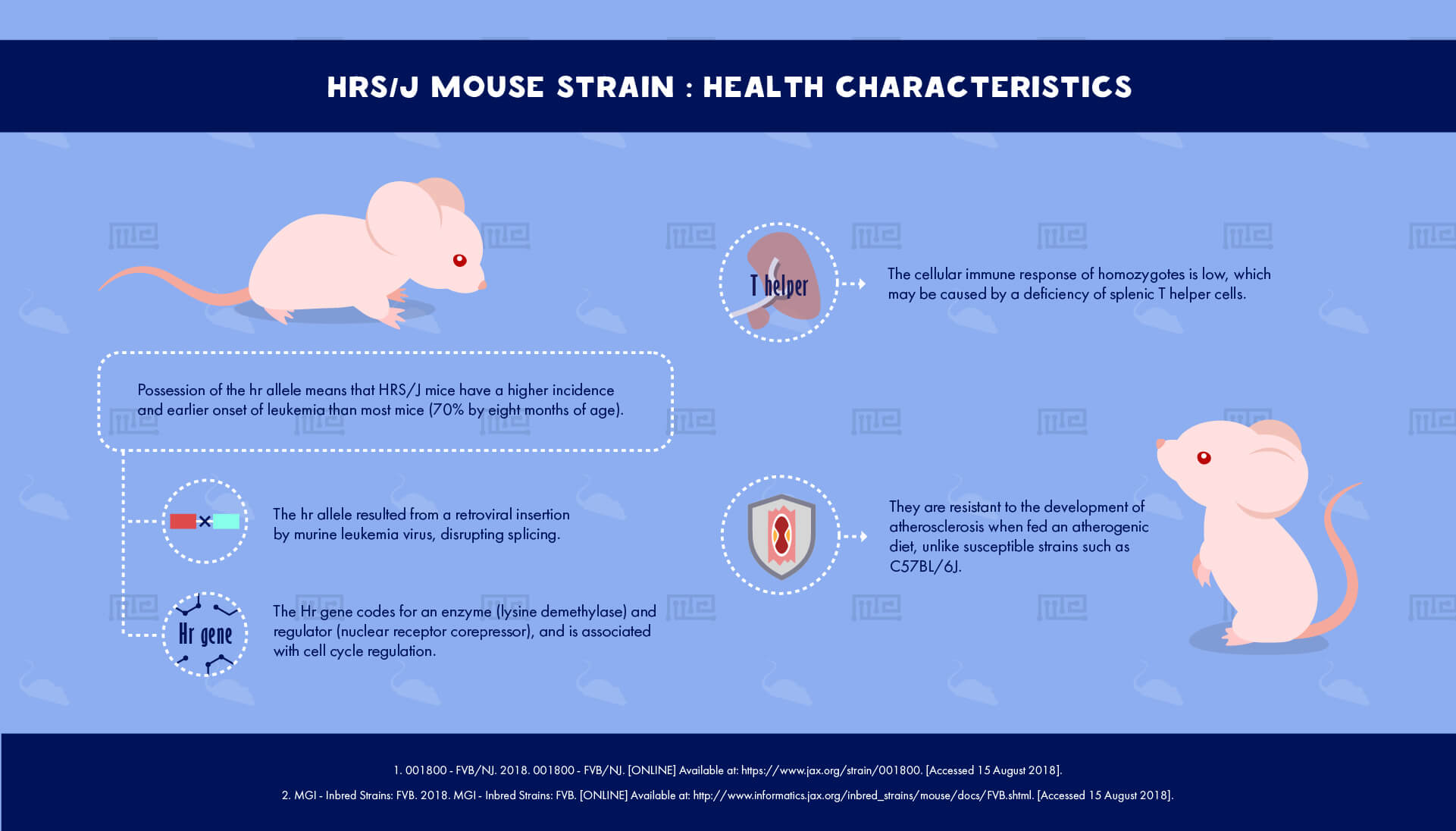Overview
HRS/J is a mutant mouse strain that is primarily used in cancer research on account of its high incidence of leukemia.[1]
History
HRS/J possesses the hairless mutation, Hrhr, which was first found in a mouse from London in 1924. A stock of hairless mice was generated from this individual, and passed through several researchers throughout the early 20th century, before finally coming to the Jackson Laboratory in 1956.
E.L. Green at Jackson received the mice from Chase at Brown University, US. He crossed them with BALB/c and then began intensive inbreeding to create the current HRS/J strain. It received the name “HRS/J” in 1964, after 24 generations of inbreeding.[1][2]
Physical Characteristics
As the name of their key mutation suggests, HRS/J mice do not have hair, although they are technically classified as albino and have red eyes. Homozygotes lose their hair by around ten days of age.[2]
A second round of thinner hair growth is seen, but this is also lost. Keratin grows in the epithelium, toenails become long and curled, and there is often cyst formation in the lower part of the follicles (HRS/J mice often have a high number of large cysts).[1]
Behavioral Characteristics & Handling
The Jackson Laboratory describes HRS/J mice as “jumpy” and warns that “weanlings squeak a lot when handled”. It seems then that this strain is not the easiest to handle, and thus researchers requiring a highly docile strain may want to avoid HRS/J.
These mice have been observed to eat more than most strains, and also exhibit moderate cleanliness. No studies of the behavior of this strain in mazes could be found in peer-reviewed literature.[3]
Health Characteristics
Possession of the hr allele means that HRS/J mice have a higher incidence and earlier onset of leukemia than most mice (70% by eight months of age).[2] The hr allele resulted from a retroviral insertion by murine leukemia virus, disrupting splicing. The Hr gene codes for an enzyme (lysine demethylase) and regulator (nuclear receptor corepressor), and is associated with cell cycle regulation.
The cellular immune response of homozygotes is low, which may be caused by a deficiency of splenic T helper cells. These mice are also resistant to the development of atherosclerosis when fed an atherogenic (high fat, high cholesterol) diet, unlike susceptible strains such as C57BL/6J.[1]
Major Experimental Uses
HRS/J mice are of most interest in cancer research, especially on leukemia, thymic lymphoma, and skin cancer. They have also been applied to the study of dermatology, immunology, atherosclerosis, and toxicology.[1]
References
- 000673 – HRS/J. 2018. 000673 – HRS/J. [ONLINE] Available at: https://www.jax.org/strain/000673. [Accessed 29 November 2018].
- MGI – Inbred Strains: HRS. 2018. MGI – Inbred Strains: HRS. [ONLINE] Available at: http://www.informatics.jax.org/inbred_strains/mouse/docs/HRS.shtml. [Accessed 29 November 2018].
- The Jackson Laboratory Handbook on Genetically Standardized Mice. 6th ed. 2009. [ONLINE]. Available at: http://jackson.jax.org/rs/444-BUH-304/images/JAX%20Handbook%20Genetically%20Standardized%20Mice.pdf.


